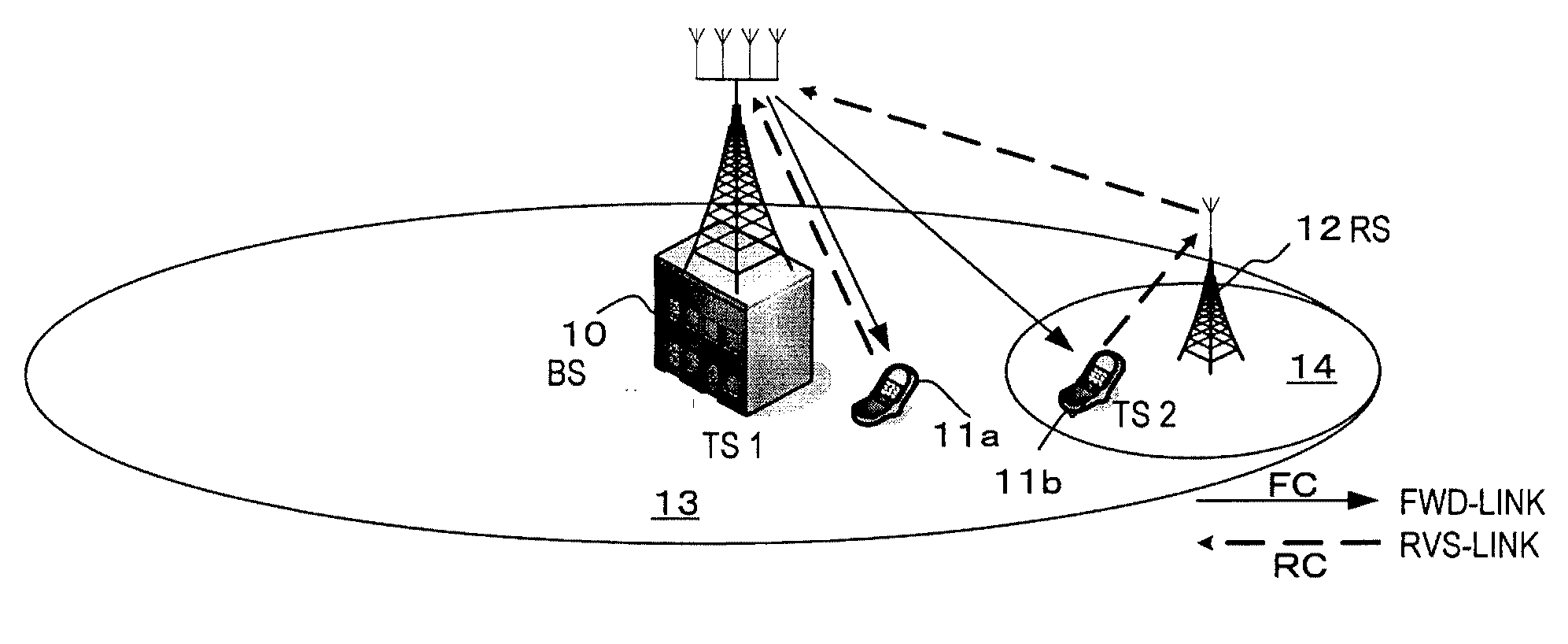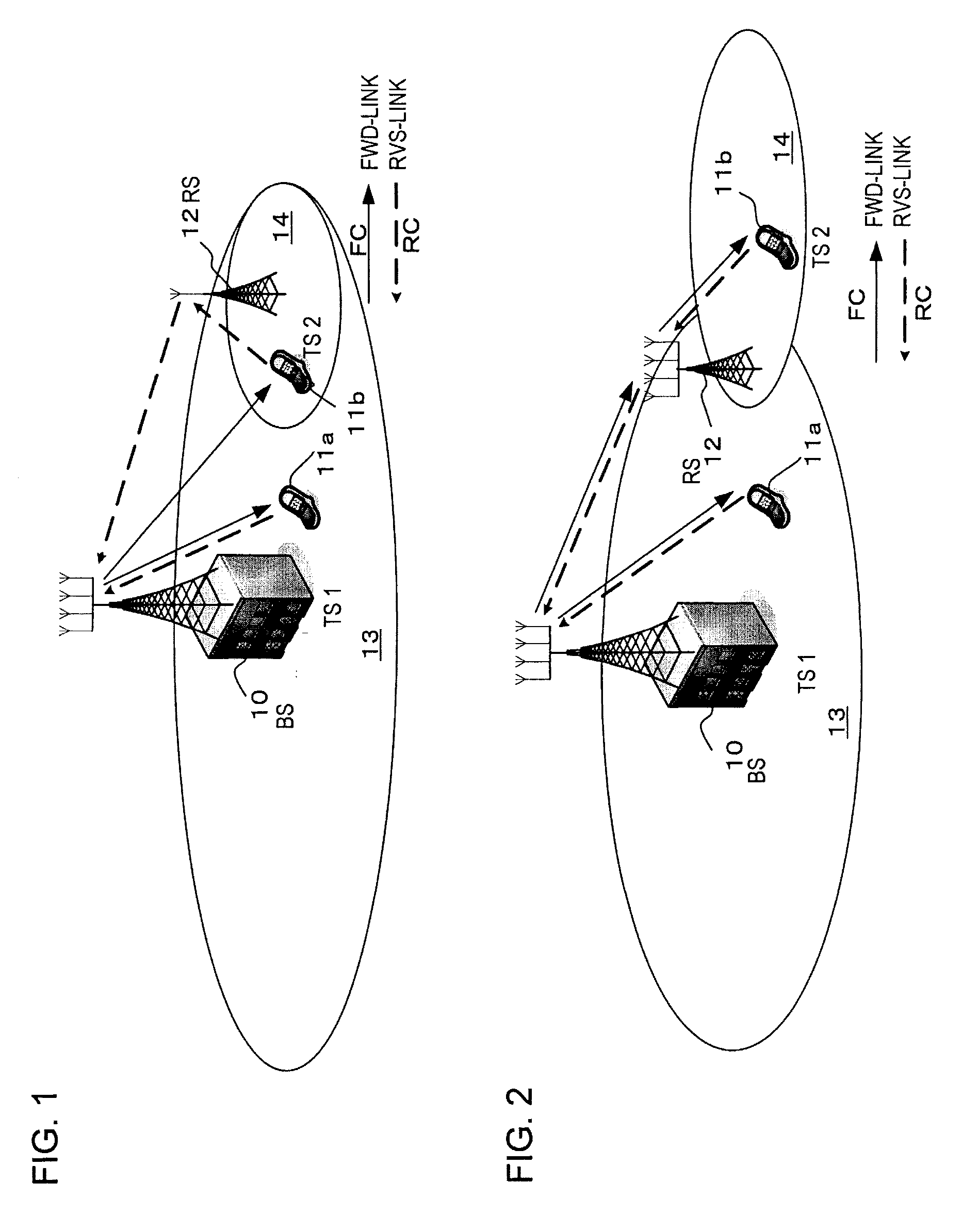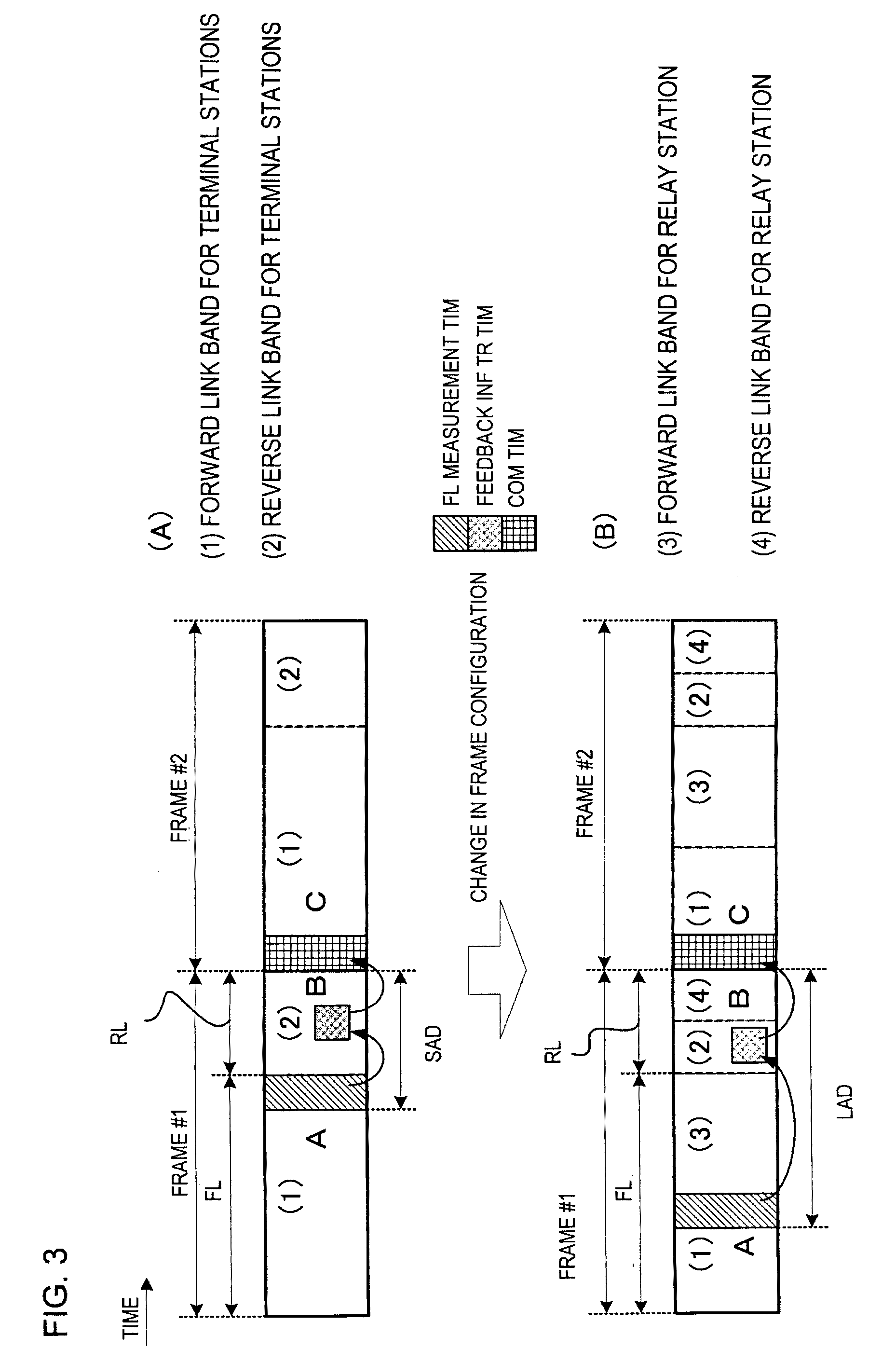Mobile Communication System Using Adaptive Multi-Antenna
a mobile communication and multi-antenna technology, applied in wireless communication, substation equipment, wireless commuication services, etc., can solve the problems of low antenna gain, low transmission power, and degradation of characteristics, so as to improve reception characteristics, effective band utilization, and optimize processing amounts
- Summary
- Abstract
- Description
- Claims
- Application Information
AI Technical Summary
Benefits of technology
Problems solved by technology
Method used
Image
Examples
Embodiment Construction
[0046]Below, embodiments of the invention are explained using the figures.
[0047]FIG. 4 illustrates a first configuration example of a wireless base station 10 to which the invention is applied.
[0048]FIG. 6 is a corresponding configuration example of mobile terminal stations 11a and 11b (hereafter simply referenced as 11).
[0049]In the configuration of this first embodiment, four transmission / reception antennas AT1 to AT4 are provided in the wireless base station 10, and one transmission / reception antenna AT5 and one reception-only antenna AT6 are provided in a mobile terminal station 11.
[0050]The antenna configuration is not limited to the configuration of this practical example, but can be selected appropriately according to the propagation, installation and environment conditions. As the communication method, FDMA, TDMA, CDMA, OFDMA, or another method can be employed.
[0051]Corresponding to these various methods, functional blocks for spreading and despreading in the CDMA method, fo...
PUM
 Login to View More
Login to View More Abstract
Description
Claims
Application Information
 Login to View More
Login to View More - R&D
- Intellectual Property
- Life Sciences
- Materials
- Tech Scout
- Unparalleled Data Quality
- Higher Quality Content
- 60% Fewer Hallucinations
Browse by: Latest US Patents, China's latest patents, Technical Efficacy Thesaurus, Application Domain, Technology Topic, Popular Technical Reports.
© 2025 PatSnap. All rights reserved.Legal|Privacy policy|Modern Slavery Act Transparency Statement|Sitemap|About US| Contact US: help@patsnap.com



